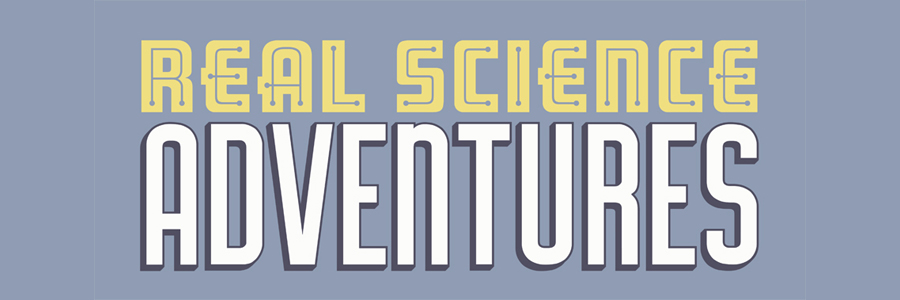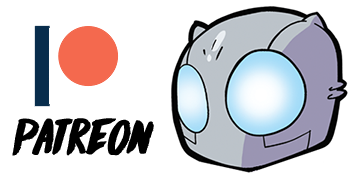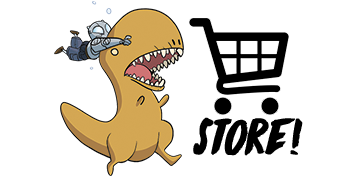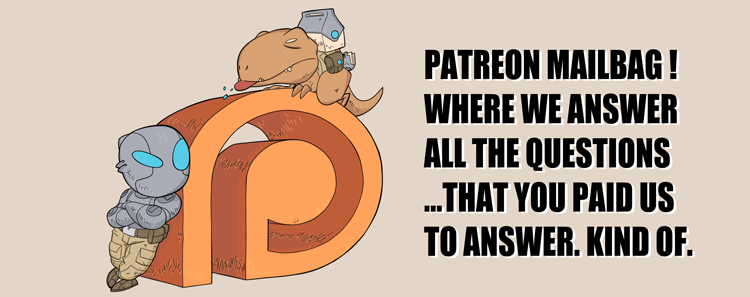Posted February 19, 2015 at 12:00 pm
You've got questions. We've got answers. Let's dive right into it!
In light of no 'No Retcons or Reboots' part of the promise is there anything in the earlier stories that you wish you'd done differently, but now have to stick with, and has any of this changed how subsequent stories would have developed?
Mark
Not really! I wrote a meandering blog post earlier in the week that touches a bit on why that is, but it doesn’t say so explicitly.
Basically, it’s another advantage of telling stories out of order. As Scott and I learn more facts about Robo’s world, we’re able to insert facts and events into his past to reinforce those facts. The reader's experience, then, is merely one of new ideas being added to a body of information rather than having those ideas remove old ones.
If we think an established fact needs to change, there are two choices. The first is do nothing. Just leave the old version alone and try to find a different way to incorporate the new ideas into the established past. I can't think of when we've had to do that, but I'm sure we have. Y'know, part of the creative process that no one really talks about is how subtractive it is. You'll come up with ten ideas that sound great but then when you get in there and turn those ideas into the story, you turn up all kinds of difficulties with them. I think the worst thing a writer can do is to fall in love with an idea. You have to cut without remorse and without pity. I'm sure at some point, at least one of the cut plots, or characters, or ideas we've come up with in the last seven years was cut because it would've require a retcon.
The second option is something we use constantly. It is, in a sense, the very essence of episodic fiction. We present new facts -- whether in the past or the present -- that cast a different light on the old information.
This is pretty easy for us since the series bounces back and forth in time. A lot of information is given to readers from characters talking about their own understanding of what has happened or what will happen. And that’s the key, really. Because all it means is showing that character’s understanding of those events to have been incomplete.
Best example: way back in Volume 1, Issue 1, Helsingard talks about the Hollow Earth. This was when we weren’t yet sure how closely we wanted Atomic Robo’s world to match our own. Hell, we didn't even know if it there was going to be a second volume, so maybe it was something we didn't have to think about at all. Well, spoiler alert, we kept making comics and it turns out we were more interested in Atomic Robo’s world matching ours as closely as possible. And that means Hollow Earth is right out of the damn question.
What do you do? Well, you make it so that there is a “Hollow Earth” but present new facts about it. Instead of the Earth being literally hollow, you posit that there are several subterranean cave networks located around the world. They are enormous and separate from one another. They have their own ecosystems based on billions of years of divergent evolution guided by environmental factors unlike anywhere else on Earth -- hell, unlike each other as well. Each “Hollow Earth” instance can then be its own minor interior alien worldlet, and what happens in one of them has no influence on the others.
Big cave networks, even if implausibly large, don’t contradict reality as we know it. And Helsingard mistaking one of these networks for the full extent of Hollow Earth doesn’t contradict revealing more Hollow Earth caves, or the denizens of those caves being very different from anything Helsingard described.
Boom, problem solved.
See, most comics are subject to retcons because they’re depicting an eternal “now.” There is no future, not really, just the illusion of one and, in its place, a “now” that is updated forever. And while that has a lot of unintended side-effects on a narrative, one of the more glaring ones is that the story’s own past can never connect to its present without constant reinvention of the past to match the newest “now.”
That’s a lot of weird words, so here’s an example: “Spider-Man was bitten by a radioactive spider,” is an established fact of the past, but the how and when of that bite is constantly changing to match the newest “now” of Spider-Man. So, 1963’s Peter Parker was bitten by that spider in 1963, but 2015’s Peter Parker was not because his past has been continually reinvented to match his newest "now." That’s one of the reasons we keep getting new versions of old origin stories in comics and film. It’s an attempt to give the newest “now” its own past back. And we've already seen how ludicrous this can be outside of comics -- Amazing Spider-Man's origin movie when Raimi's Spider-Man origin movie is right there.
We don’t do that with Atomic Robo. We have stories that take place “now” of course, but they’re firmly rooted in a specific time and place. They will soon be the past because the future of Atomic Robo isn’t an illusion as it is in most mainstream comics. Atomic Robo's future, just like the real future, simply hasn’t happened yet. All we have to do is wait for it to unfold. So, 1963’s Atomic Robo could be bitten by a spider, radioactive or otherwise, back in 1963, and that fact will remain true for 2015’s Atomic Robo. And it will still be true in 2020 or 3020. No retcon needed.
We worked out a vague timeline of Robo’s life from activation to the “now” of 2006 when we were doing this. It wasn’t as detailed as the current timeline because we couldn’t know where Robo and his world would take us as we worked on it. But the major events were mapped out. This gave us enough structure to start writing stories with enough room between them to let us flesh it out new ideas about how to populate the blank spots of that structure as we came up with them over the years.
What happened between Robo and Hawking?
Sterling
We get this one a lot. My original idea is that they were romancing the same lady and that drove a wedge between them.
But then we came up with Zorth Cartography in this very volume, and it’s an element of the setting that keeps finding places to crop up. So, now we’re thinking that instead of competing for love, they were competing for scientific theories to explain black holes.
Hawking’s theory “won” and Zorth Cartography faded into obscurity. The two have been bitter rivals ever since.
What plane makes up the She-Devils’ mother ship. Is it a Sunderland or a Martin PBM Mariner?
It is indeed a Short Sunderland. Specifically the Mark IV, a.k.a. Short Seaford. I think. I’m sure Scott will correct me if he actually reads these things.
I seem to remember hearing that a lot of the Action Scientists are based on people Brian and Scott know. Is there any list of who people are inspired by? Or even just who are inspired by real people if privacy is an issue.
Ben
I didn't think there were too many until I started answering this question.
You actually just saw the first time it happens. Dr. Lewis and Dr. Martin are based on Brian and Scott. The new faces you see in Volume 4 are all based on people Scott knows. My favorites there are Ben Robbins (the Guardian Green) and Terrence (the Winston) with honorable mention, because I only met him once, to Robo's assistant Jerry based on A Different Brian Whom Scott Knows.
Helen's design in Volume 5 is based on Scott's wife. Powell down in Exotic Ballistics in Volume 6 is based on our very own letterer, Jeff Powell. All the She-Devils in Vol 7 are based on real ladies we've met through our comics work. Atomic Robo's "heart surgeon" is based on Phil our real life nuclear scientist buddy and Weirdness Consultant.




